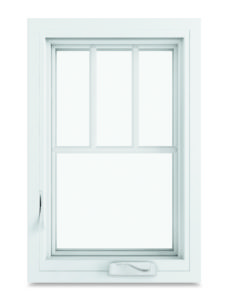 If you’re thinking of installing casement windows in your home, you may be unsure what direction they should open. As a starting point, casement windows should pivot outward rather than inward. Keep in mind that this means the screen must be installed on the interior.
If you’re thinking of installing casement windows in your home, you may be unsure what direction they should open. As a starting point, casement windows should pivot outward rather than inward. Keep in mind that this means the screen must be installed on the interior.
Casement windows open by pivoting rather than sliding. This unique operation makes it easy to open a casement window that’s behind the kitchen sink or in another hard-to-reach place.
The fact that casements require a crank to open also improves home security.
The next decision is to purchase casement windows with hinges on the left or right side. While the decision is ultimately up to you, this guide can help you make a functional and aesthetically pleasing choice.
Handing refers to the direction a window or door opens. When determining window handing, always envision the window from the exterior of your home.
Casement windows are labeled in one of two ways. FCL refers to a left-handed window, where the hinges are on the left and the locking mechanism is on the right.
FCR is a right-handed window with the hinges on the right and the locking mechanism on the left. Remember, these definitions apply to a window when looking at it from the exterior.
Diagrams of casement windows show a dashed triangle with the hinged side identified by the point of the triangle. FCL windows feature a triangle pointing to the left; FCR windows have a triangle pointing to the right.
There are no set rules to determine which side of a casement window should be hinged. These windows are available in both styles, so it’s up to you where and how to install them.
These general tips provide the best results:
Quality Window & Door is a reliable window dealer serving the Maryland, DC, and Virginia metropolitan area. We can help you choose the right casement windows for your needs and ensure the installation is correct for the best appearance and functionality.
Weather Shield has produced American-made windows and doors since 1955. Weather Shield has made some of the highest quality windows and doors available, including casement windows.
Call Quality Window & Door today at 1-800-370-8751, or visit one of our local Maryland or Virginia showrooms to see how professionally installed casement windows look.
Casement windows pivot rather than slide, so they’re typically used in hard-to-reach places. The position of your hinges and the direction of your pivot are up to you, but the form should always follow the function. Your decision is more powerful than you might think.
Casement windows generally pivot outward, so you don’t have to think about clearance space when planning your décor.
An outward pivot will allow you to place your windows over the sink and other hard-to-reach places. It will also ensure your pathways aren’t blocked by the glass. An outward pivot is an important safety feature if you have younger residents.
There is also a case for an inward pivot. If you’re outfitting an upper floor, your windows will be easier to clean if they open inward.
Casement window hinges can be placed on the left or right. An FCL or left-handed window positions locking mechanisms and hinges on the left. FCR or right-handed windows keep the hinges on the right.
As their name suggests, right-handed windows are easier for right-handed people and vice versa. If you have a set of two casements positioned alongside one another, it makes sense to place the hinges on opposite sides, so they open like double doors.
In terms of aesthetics, casements look best when they open toward the middle of your interior space. That means your hinges should be closest to the wall.
Air will circulate best if you use an FCR position on one side of your property and an FCL position on the other. This will direct breezes through your home more effectively, keeping it cooler and more ventilated.
Your windows will need to open into the wind, but prevailing gales don’t always blow in the same direction. That’s why we recommend having more than one casement per room. A powerful cross-breeze will make those hot summer days easier to cope with.
If you live in a noisy neighborhood, however, your windows will capture noise as well as ventilation. You can reduce noise by allowing your glass to form a barrier against neighborhood bustle.
All of our consultants have 10+ years of experience
Learn about how our educational approach makes Quality Window & Door stand out from its competitors.